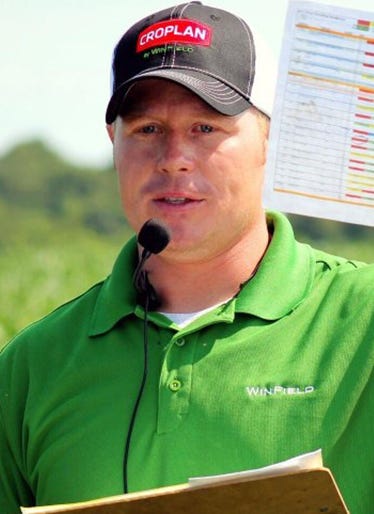December 20, 2018

By Jon Zuk
Have you started formulating your nitrogen management plan for the 2019 season?

Jon Zuk

Particularly with the new Minnesota Groundwater Protection Rule set to take effect in January 2020, making sure you have your strategy thought out will help you protect your corn yields as well as adjacent groundwater.
Here are some nitrogen management tips to keep in mind during your planning process:
1. You can’t manage what you don’t measure. Nitrogen is mobile in both the corn plant and in the soil. Make it your practice to monitor nitrogen movement and measure nitrogen levels so you can manage it appropriately.
What that means will differ from farm to farm. Maybe it’s taking a soil nitrate or tissue sample, or doing a sidedress application. Talk with your agronomist about how to best manage nitrogen in your fields. Formulate a basic plan and practice, making adjustments based on the conditions you encounter.
2. Pay attention to application timing. When you apply nitrogen plays an important role in optimizing your yield potential. If you’re not managing nitrogen well, you could apply it at the wrong time, which may not generate any response at all — and cost you money.
Poor timing — too early or too late — can also cause stalks to cannibalize early and tip over. Knowing which of your hybrids are more or less responsive to nitrogen can help you more accurately formulate your overall management strategy.
3. Get plants off to a good early start. Make sure you have practiced well-rounded fertility. Remember, all 17 essential nutrients play a part in optimizing your crop’s yield. Timing is also critical: Whether it’s an application at planting or at preplant, having enough nitrogen up front limits the amount of risk that you could see associated with yield due to lost nitrogen. That doesn’t mean applying all of your N up front. It means not shorting your crop at the outset in case there is a wet spring and you’re not able to get into the field to do a timely sidedress.
A nitrogen stabilizer is a key tool that can be used with your applications to ensure you don’t lose the nitrogen you’ve applied.
4. Use technology to your advantage. Challenge yourself to run your nitrogen plan through a modeling tool. This may help you correct what went wrong in the past — maybe due to unforeseen weather events — and let you know what you could change to achieve better nitrogen management. There are a number of platforms available; ask your agronomist to recommend the one that best fits your operation.
Also, talk with him or her about finding trustworthy data you can use to compare with the nitrogen practices you use on your operation.
5. Manage with the future in mind. Many people will be working to prepare and plan according to the new groundwater rule. Be sure it figures into your planning, too. You may have a fair number of acres that will need to have different nitrogen management strategies in the near future, which could pose an operational challenge.
Don’t risk losing bushels. Start planning your nitrogen strategy now to help avoid surprises and ensure your peace of mind.
Zuk is a regional agronomist with WinField United in southern Minnesota. Contact him at [email protected].
You May Also Like




